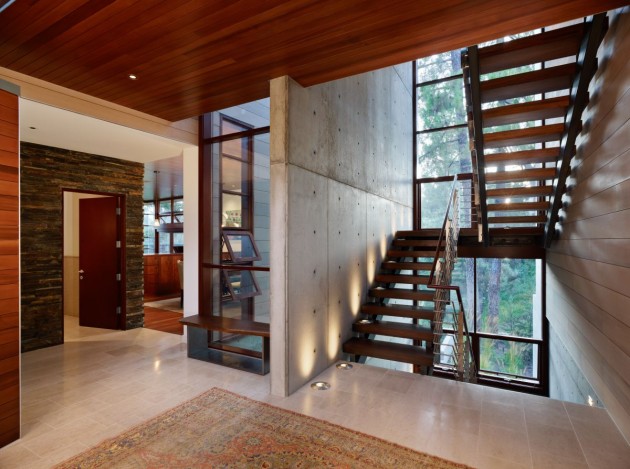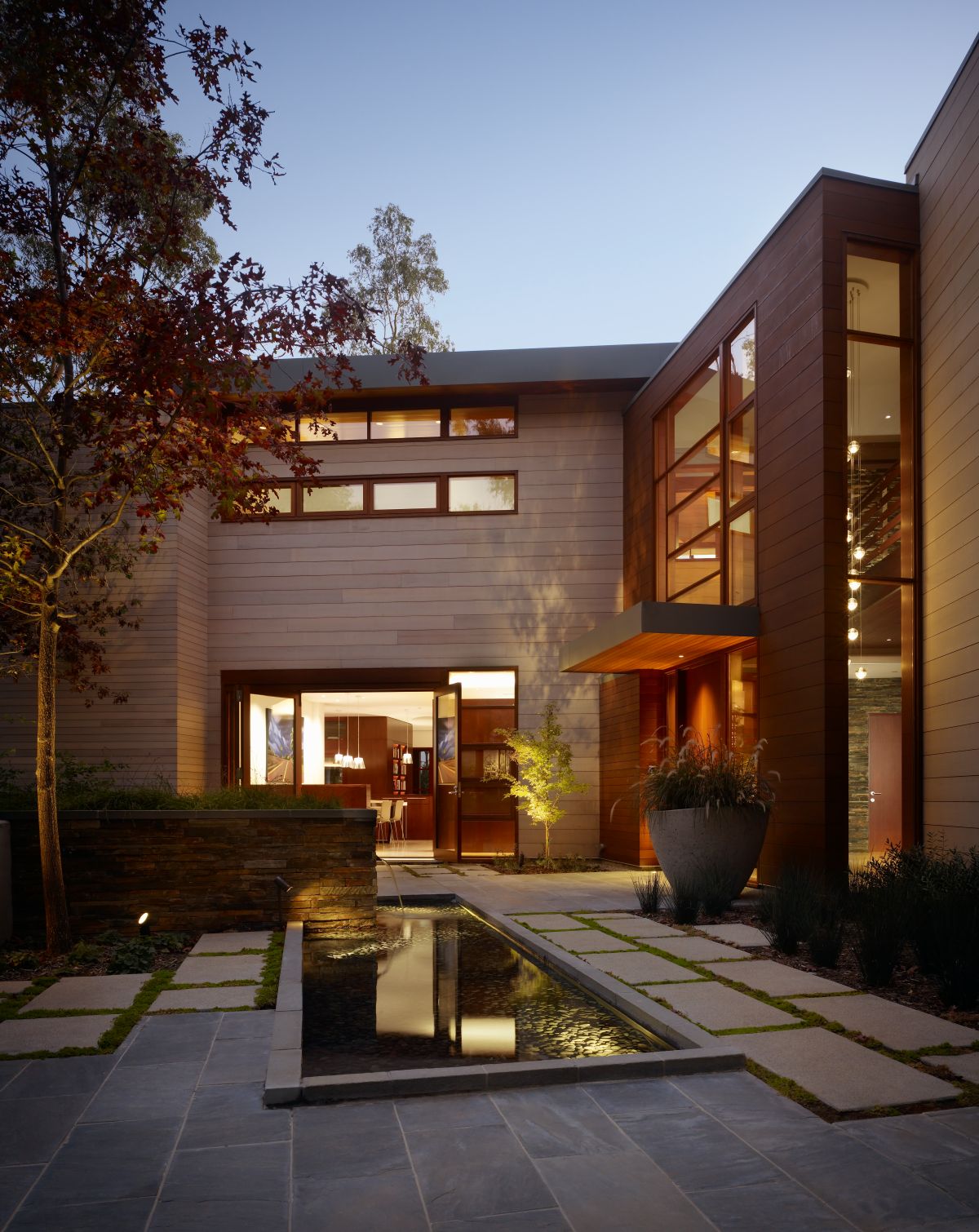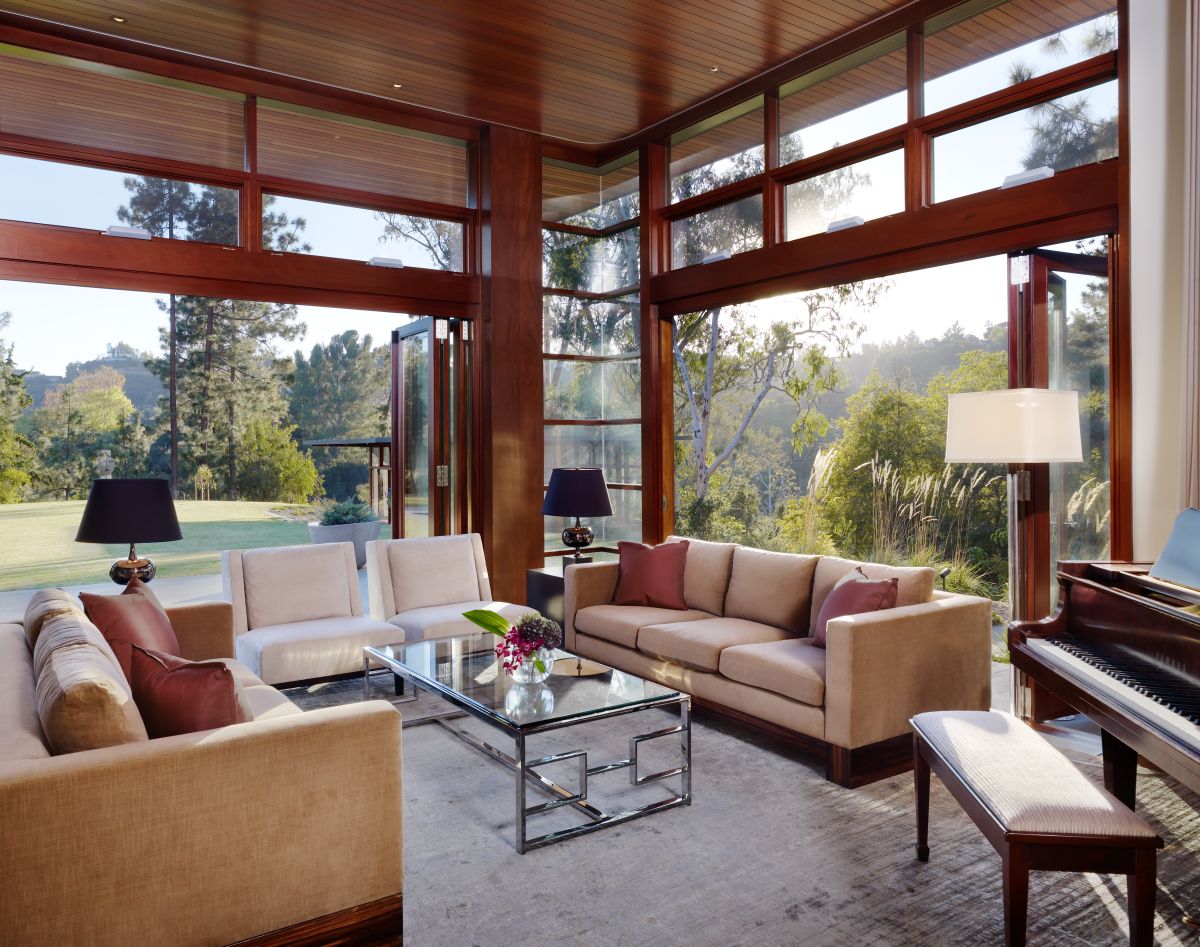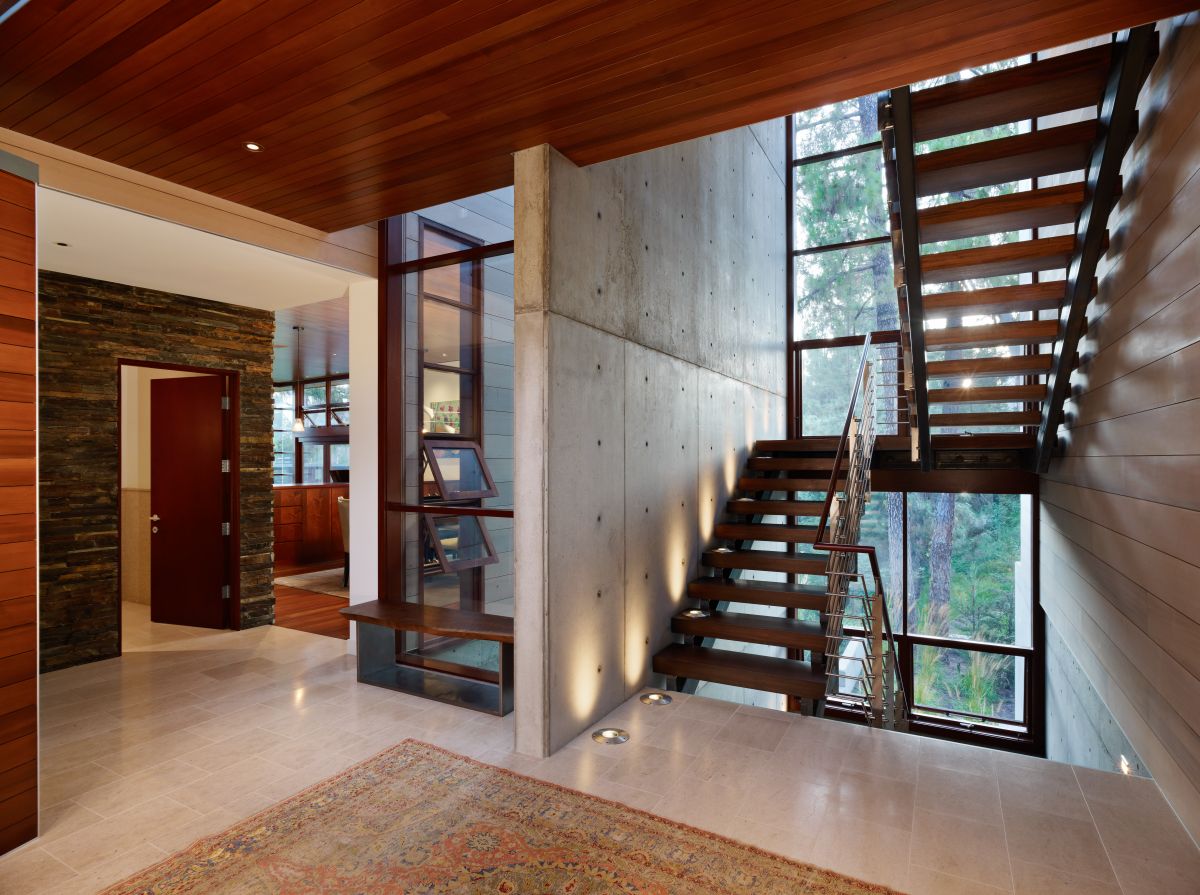Rockefeller Partners Architects designed a home in Mandeville Canyon, a small community in the Brentwood neighborhood of Los Angeles, California.
Project description
The homeowners had lived in eight houses in ten years, moving where it was convenient for work, but never finding the perfect location to create a real home. They now have two small children and needed a property where they could work, play and grow as a family.
When the homeowners found a 3.14-acre lot in Mandeville Canyon with over 200 mature trees and expansive views of the city and ocean beyond, they knew they had found the ideal environment. Upon this blank slate they wanted to build a home that would offer their children a place where they could be free to roam, play, and be curious without the constraints or risks that often come with living in an urban area like Los Angeles.
From their experience in the many homes they had owned and rented, the owners craved a home that perfected the balance between form and function, proportion and natural light. They wanted no superfluous space, but rather a well thought-out home where every room had a purpose, and was pleasing and comfortable.
When they learned that three of their favorite houses in west Los Angeles had all been designed by the same architect, and further discovered that this architect had designed (but never had a chance to build) a house for their Mandeville property’s previous owners, they knew they had found their firm.
The project began with the homeowners sharing with Rockefeller Partners a collection of photos and clippings of architectural elements they admired. This was the start of their long education and partnership with us on this singular project. We began with their family activities and lifestyle and the design grew organically outward, resulting is a stunning modern residence that showcases an extraordinary level of craftsmanship and attention to detail.
The early mandate from the home owners was that the house be useful, beautiful and timeless.
This modern residence pays homage to the craftsman architecture of the early 1900s with its originality, simplicity of form, use of natural materials and the visibility of handmade details. Much like its turn-of-the-century predecessors, the design rejects opulence and mass-produced housing elements.
Specific Design Elements
At the center of this house is the stone hearth – an integral part of a home, a symbol of warmth and family. Here, the stone fireplace wall is multi-functional: it extends vertically through the second fl oor and roof, and horizontally, penetrating the exterior wall to become a landscape feature along the pool. Within it, this stone wall houses the double-sided fireplace serving the formal living room and the more relaxed family room, as well as the more intimate fireplace for the upstairs master bedroom. As it moves from inside to outside and forms the hearths and fireplaces, the stone shifts in texture, while remaining consistent in form – it is the focal point and axis of the home.
The house design takes full advantage of the expansive site and allows one to experience the exterior and interior of the home simultaneously. From certain vantage points, it is possible to look out in all directions and comprehend the many subtle ways in which the house interacts with its environment.
Nestled between groves of trees, the residence is divided into two main wings. The public living spaces and master suite are located in one, while the children’s quarters, guest rooms, and auxiliary spaces are located in the other.
The location of the master suite and home office allow the homeowners to work in proximity to their family without sacrificing privacy. Similarly, guest quarters have a separate entrance allowing for a certain amount of autonomy while the children’s rooms are designed specifically to allow for both communal play and individual privacy.
In addition to the main house, there is a detached four-car garage, a 1950’s-era post and beam pool house (now refurbished as a writer’s studio), an oversized pool and spa, a basketball court, and a tennis court with a small pavilion.
Surfaces, Interiors and Art
For the surface materials of the house, Rockefeller Partners worked hand in hand with the interior designer, Alana Homesley. As with the architecture, the interior design stemmed directly from the client’s desire to create a timeless environment that was warm and comfortable but also refined.
The facade is clad with gray-stained cedar, inspired by the soft gray tones of eucalyptus bark. The material’s color and texture unifies the structure with the surrounding groves of trees. The cedar carries from the exterior through the main entry hall, representing its signifi cance as an interstitial space or articulation between the two sections.
Other defining surface elements are the rich mahogany doors and window frames, and a polished concrete wall that stretches three stories from the basement through the roof. Like the gray cedar, these materials move seamlessly from the exterior to the interior of the house, delineating and integrating indoor and outdoor spaces.
The formal dining room steps down to a sunken living room featuring the great stone hearth while floor-to-ceiling windows provide views of the grounds and periphery eucalyptus groves. Mahogany accordion doors open to a stone patio, again blurring the distinction between indoor/outdoor living, and a formal/informal setting.
As mentioned, the great stone fireplace wall reappears in the master suite on the second floor, there encompassing a reading niche and an outdoor raised spa on the balcony, which offers expansive views of the property.
The master suite’s large walk-in closet with custom Italian cabinetry opens to the master bath’s soft stone tones, which, despite their gentle palette have been very precisely arranged: meticulously placed limestone tiles match perfectly with the lines of the angular bathtub and the contiguous glass.
The furniture’s textures and natural tones complement the architectural materials of wood and stone. The furnishings are custom-designed to be heavy and substantial to match the solid quality of the structure.
Having both grown up among artists, the home owners are slowly collecting meaningful pieces of art by close friends and young artists they wish to support.
PROJECT RESULTS
Rockefeller Partners spent over four years designing and building the house for the home owners, preceded by 6 years designing a house for the Mandeville site’s previous owner. After over a decade, it is enormously satisfying to finally place the right structure on this property.
As for the home owners, during the four years of this project, they went through an intense education in architecture and design. They were voracious students who came to love the process and its results.
One of our favorite quotes from the home owners is that design is “like a fractal” – at every strata of detail, there is equal complexity, resulting at last in an integrated whole as beautiful in the small things as it is in the large.
Architect: Rockefeller Partners Architects
Photography: Eric Staudenmaier









































